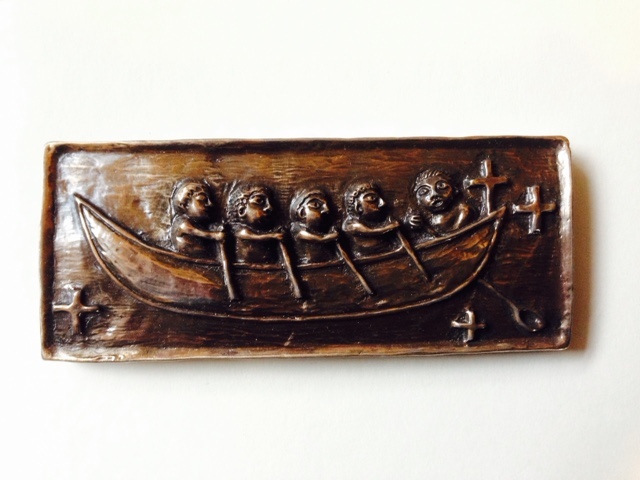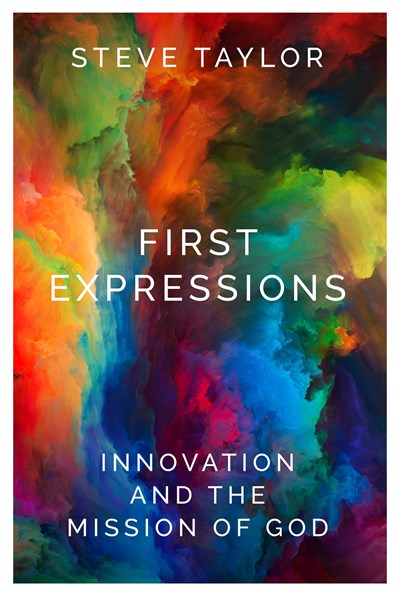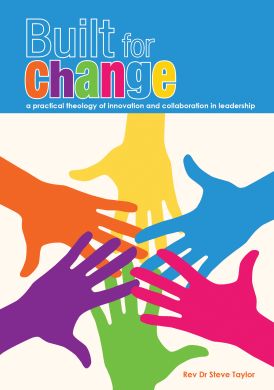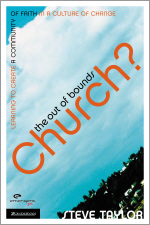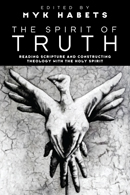Wednesday, August 18, 2010
UK trip update
A few weeks ago I mentioned the possibility of being in the UK for a week in September. A fair bit of discussion on the home and work front and lots of email conversations …. and here are the current tentative details
Leave Monday 13/Arrive London Tuesday 14
Wednesday 15 – Spurgeons D.Min programme
Thursday 16 – ? possibly Spurgeons M. Theol programme (TBC)
Friday 17 – train to Durham with Jonny Baker, comparing pioneer leader training notes.
Friday 17/Saturday 18 – Evaluating Fresh Expressions Research Consultation. I’ll be doing a paper – Evaluating birth narratives (TBC) – plus networking with various folk around pioneer leader training for both lay and ordained here in South Australia.
Saturday 18 – Coffee conversation – mission and the mixed economy – with Methodist leaders (TBC)
Airborne Tuesday 21/Arrive Thursday 24.
My Sunday and Monday are still up in the air, so if I could be of speaking/consulting help in your missional project, drop me a line. If not, I’ll tuck up at a Durham pub and write!
Sunday, August 15, 2010
a sociological reflection on the growth of fresh expressions
Interesting article by David Allis, exploring growth (numeric) in new forms of church/fresh expressions. David is a Kiwi, who withdrew from the more Pentecostal end of church life to focus on a home church in his local neighbourhood. The article is a few years old (2007), but makes some good points. David suggests that when we look at new forms of church we need to realise that:
- Slow Growth is Normal. Allis quotes (the excellent) Rodney Stark (The Rise of Christianity: How the Obscure, Marginal, Jesus Movement Became the Dominant Religious Force ….
, 6) who estimates that Christianity grew at 3.4% per year for the first few centuries. “Hence, anything new that starts with small numbers and grows at only a few percent per year, will take a long time to become large.” (This was certainly our experience at Graceway, starting with a small core team.)
- The drain created by existing models. “The existing church models are the norm, and people (both churched & unchurched alike) think this is the only way to do church.” This means that alternative models require people to have thought through new forms, or with new converts. Further, “It is difficult for a new small tree to grow under the shade of a large tree, as the large tree drains the nourishment from the ground and; also shades the light.” Yeah, all you light shaders! 🙂
- Exhaustion. Potential leaders are most likely to come from people who leave the organised church structure. They are often more ready to want to ‘take a break’ from church activities, rather than throw themselves quickly into something new. (I can certainly relate to this one. I’ve struggled to stay afloat in the last 6 months, let alone have energy for something else.)
(The full article is here). I think the points are well made, and as always, value any comments.
Friday, August 13, 2010
Fresh expressions. Import or Local (South Australian) produced?
I wrote the following for New Times, the monthly denominationl magazine here in South Australia. Others beyond might be interested.
South Australia is famous for our local produce – Kangaroo Island honey, Riverlands dried fruit, McLaren Vale reds. So it is worth reflecting on Dave Male’s recent Synod input in light of what is happening locally in South Australia.
Dave suggested that a fresh expression goes through a number of stages in their formative journey. This starts with “listening to God’s call”, moves to “loving service”, then is followed by “forming community” and “disciple-making”. The result is “church” emerging in a fresh space, opened up in response to the creative work of God’s Spirit.
So in light of Dave Male’s input the Fresh Expressions team cast an eye over what is being locally grown here in South Australia.
Candlelit Reflections at Modbury have sensed God’s call and their “loving service” has involved creating a quiet, meditative space. The next step in their “fresh expression” journey includes how to appropriately gather individual seeking spiritual searchers into community.
Fresh expressions are never only urban. In the Barossa, Greenock Uniting Church have seen people begin to gather around a building used for “loving service” not on a Sunday, but in a mid-week café with local art and craft. The next step in their journey also involves the challenge of “forming community.”
Hungry no more, at Mt Barker, has seen their “loving service” naturally lead into “forming community.” Their challenge now includes “disciple-making,” with the realisation that the people they are ministering with have unique needs. Hence discipleship and church will definitely need to take shape as a “fresh expression.”
A fresh expression journey is never linear, as is evident in the Esther project. An initial dream to form church around theatre production then took shape in 2009 around storytelling. Community began to form, but recent changes are causing a re-think.
City Soul or Eco-church would be an example of Dave Male’s final stage, “church” taking unique shape, whether around student life or environmental concerns. Both are locally grown, and missionally creative, fresh expressions.
The Synod Fresh expressions team are keen to build on these, and to encourage other locally grown products. The Regenerate pub conversation serves as a bi-monthly resource (for information contact Nicola Shaw at Uniting College). Plans are underway to offer a Fresh expressions vision day on Saturday, 27 November, 2010 and Fresh Expressions training through the Mission-shape ministry course in 2011.
Steve Taylor, Director of Missiology, for Fresh Expressions team
Saturday, August 07, 2010
review of jonny baker’s book curating worship
Curating Worship by Jonny Baker (although it should really be Jonny and co. and Disclaimer: I am one of the co.!) is an excellent addition to the emerging church/missional church discussion.
Curating worship is a term used to frame an approach to worship that is neither liturgical presiding nor fronting a band. Rather it is the skills of framing other people’s elements. It’s a ethos of participation:
“In many church circles the only gifts that are valued for worship are musical ones or the ability to speak well. This attitude needs shattering, and opening up so that poets, photographers, ideas people, geeks, theologians, liturgists, designers, writers, cooks, politicians, architects, movie-makers, storytellers, parents, campaigners, children, bloggers, DJs, VJs, craft-makers, or just about anybody who comes and is willing to bounce ideas around, can get involved.” (12)
Or in the words of the Uniting Church, Basis of Union, “the one Spirit has endowed the members of Christ’s Church with a diversity of gifts, and that there is no gift without its corresponding service.” Or in a Baptistic understanding, the priesthood of all believers. So curating worship is an approach by which the priesthood of all believers, with their diverse gifts, can find corresponding service in public worship.
What Jonny wants to do is write a book because “creative processes can seem mysterious and unattainable, even intimidating. The hope is that lifting the lid off the process and thinking might help demystify curating worship, and encourage people: ‘You can do it!’ (7)
He does this through what he calls 12 interviews with people involved in curating worship experiences around the world. While Jonny calls them interviews, I actually think they are conversations in which Jonny engages in lengthy to and fro. Because they are companions and friends, because relationships are established, Jonny can push and probe, asking some tough questions:
- Does it matter if emerging churches remain small?
- Arn’t some communities actually leading as artists and not curators?
- What are the theological implications when alt.worship communities close?
- What is the place of intellectualism?
Which makes this one of the most honest books I’ve seen from inside the emerging/alt.worship conversation. It also means a book in which the medium is the message – a book on curating in which the main author actually curates, shining the light on others. The range is rich – from public exhibition artists to pastors, from New Zealand through Australia to USA and UK, from those at the centre of churches to those off the edges, from lay to ordained.
The book has another heartwarming upside and that is the way it locates itself in a dialogue not with the church, but with the creative world, particularly the notion of curating as it has been researched in art and museum studies. What this means is a book that does not have to gain momentum by scoring points against other practices and practitioners in worship, which makes for a generous and creative read.
Curating Worship is an excellent read that marks a moment of maturity in the emerging/alt worship movement. First in articulating a clear and unique theology of worship. Second in conducting a critical conversation. Third in genuinely modelling a collective approach to authoring.
PS If you live in Adelaide and want to purchase a copy, I have a boxful of 20 books.
Friday, July 30, 2010
planting fresh expressions down under: a tale of seven churches
Here in South Australia we recently enjoyed the visit by Dave Male. One of the big helps for me was when Dave talked about the size of the core team in planting fresh expressions. He was making the point that the smaller the team, the slower the progress, but the more likely it would be radical re-expression of missional life. In contrast, the larger the core team, the more quickly the plant might grow, yet the more likely the new plant can end up look like it’s planting parent.
It helped me make sense of my fresh expressions experience.
My partner and I planted Graceway in 1994. That was last millennium, when noone was talking about fresh expressions or emerging church. But we knew that our mates were dialling out of church, yet still were encountering God. We started reading the literature on cultural shift and out of that emerged Graceway. We had values of community and creativity and participation, so we met cafe style, always had food, had a barstool for open sharing and explored the whole-body in worship. The planting team was small and it was such a long, hard slog, real pioneering.
There was simply none of the infrastructure and conversations and books that there are around now. We endured at times quite active hostility. But we learnt heaps and plugged away. We made mistakes but we saw God move. We saw some unchurched find faith, developed a distinctive way of life, built networks with the community and found ways to serve and love people. After 9 years we moved on. Graceway was fragile but had some good leaders.
We moved to Opawa in 2004. We were at Opawa six years and in that time had a go a planting six fresh expressions. One per year is good going when you think about it! (I talk about the multi-congregational ethos, which gave this initial shape elsewhere on this blog).
First was espresso, a Tuesday night discussion community for those wanting to explore faith questions is a conversational, open way.
Then came the hymn service, soup on Sunday afternoon, choosing of favourite hymns, a testimony and a sermon. connecting with those for whom hymns was an important part of faith formation.
We tried a number of experiments for spiritual seekers, running a journalling course in a local cafe, offering Sense Making Faith course. Each was important in connecting us with spiritual seekers, but none developed into a cohesive congregation. (Still important, still a great learning, still saw folk baptised.)
We re-planted our evening service in two different forms. One was a monthly Soak service, as a time to “soak” in God. Not so much a pioneering work, but more a contemplative space for people to make time to engage (soak in) God. Sung worship, lectio divina and then a range of stations. Lot of attention paid to the space, which, being in main auditorium was always big and worked really well in terms of contemplation.
The other was Grow which used the table as the main metaphor. People gathered in groups and on each table was an A3 sheet of paper in which people were invited to reflect on two theological questions – who is God and who are humans. Grow had a three week focus and each evening used multiple inputs – video clips, interviews, during the week challenges, top 10 quiz, sermon, prayer.
Another trial was made with the Gathering, which used a local community cottage to work with folks local and close to the church building. Lots of food, gathered around a big wooden table, Bible open.
Looking back, using Dave Male’s lens, helped me see that Opawa was a totally different way of planting fresh expressions than Graceway. Rather than lone “ordained” pioneers, we were involving teams of lay people. (Which you simply don’t have when you are the lone pioneer). Each expression looked for 4-5 people who gathered around an “itch” to explore new possibilities. Each faced the downside, the danger, of becoming a new form of worship, rather than a genuinely missional new form of church.
As Dave says, both types have their strengths and weaknesses. Multiple congregational planting with lay teams is much easier, while pioneering is much more radical.
I’m not sure what the point of this post is. (In fact, I’m not actually often sure what the point of this blog is.) Perhaps someone might find some resonance in one of these tales of seven fresh expression churches.
Saturday, July 24, 2010
FOSMT (free and open source missiology textbooks)
Helpful post here by AKMA on steps to an open source theology. He is discussing the Old Testament, but so very easy to apply to missiology. In sum
- First, work out an overall structure and uniform presentation.
- Second, find authors to write initial chapters to flesh out the structure
- Third, edit chapters for uniformity and place on web.
- Four, arrange a PoD publisher to sell papercopy
- Five, encourage uploading of alternate points of view.
The result:
Bing, bang, bong, you have an open-source, free as in beer, free-to-reconfigure, free-to-supplement or even -alter (provided you give credit and don’t offer the altered version commercially without the author’s agreement) textbook. And that textbook is now useable anywhere English is read, for free. And that textbook is putting your name(s) in front of students and teachers all over the world, especially in places where they can’t necessarily afford the doorstop hardbacks that the textbook publishers love to charge so much for. And that textbook can easily be kept up-to-date. And if some agency were to fund it (and such funding needn’t even come to very much, in the world of granting — small to moderate honoraria for authors, editorial/production support, and so on), they could slap their name (or a prominent donor’s name) right there on the cover and on every title page
So I am wanting to develop for next year
a) mission-shaped course for Australasia
b) Mission then and now history and theology paper.
I wonder what these would look like FOSMT. Anyone want to partner in either step one, work out an overall structure and uniform presentation; or on step two, author a chapter; or on step three, being an editor, or on step zero – being the initial funder in order to position/brand your organisation as an innovative, missionary-focused, partnering type?
Wednesday, July 21, 2010
church for the (kiwi) man in the shed
My interests include the relationship between church and society, gospel and culture. What is the role of the church in the world? How does the world see the church?
I’m currently enjoying The man in the Shed, a collection of short stories by Kiwi writer, Lloyd Jones, published in 2009, a commercial follow-up to the success (Commonwealth Writers Prize and shortlist for Man Booker Prize) of Mister Pip.
One story, Lost Cities, begins with Alice, who is painting her (rural Canterbury) town, building by building.
“And after the theatre, she plans an eating house and, next to it, a bar, and across the street a police station and gaol. And at the end of the street, a church of sharp cheekbones and high forehead. Within view of the church Alice adds the farmhouse.” (52)
A typical rural town, complete with to be expected church. The pages of the short story continue to turn.
Over time, Alice’s husband dies and her son, Mark grows. In time, Mark leaves for the bright lights (of Sydney). All the time, Alice continues to paint, the same picture, touched and re-touched, a visual reflection on her changing life in changing times. She paints and repaints. The tree grows, the buildings are modernised, threatres and restuarants are added, the city crowds are coloured in.
“Milling among the crowd over the ‘historic’ flagstone area are hotdog vendors, jugglers, pickpockets, thieves of all descriptions. There are yellow cabs, policemen on horseback, a flotilla carrying a beauty-pageant queen.” (59-60).
It’s a gorgeous sentence and a fascinating way to visualise change. The painting work as the still point, the canvas which captures change. So what will be the place of faith, the church, as times they are a changing?
“Over the church hovers Alice’s paintbrush. She hesitates to demolish it because the city will need a soup kitchen for the lives stranded short of the promised land.” (60).
It’s a fascinating glimpse, one perspective, on the future of faith in a culture of change. In the imagination of Kiwi author, Lloyd Jones, the future obviously needs a church. The reason is based on what Lloyd sees as the role of the church in contemporary society – to care for the broken and dispossessed. As it does that, it earns the right to remain in a contemporary painting, as it exists as a beacon of hope.
Yet such a place for the church, remains for Alice simply a painting. She might be grieving, she might be oh so creative. However, church remains for her an object painted for “them.” Never, for creative, middle-class, grieving Alice.
A fascinating way to paint the body of Christ into society today!
Wednesday, July 07, 2010
this is classic: emerging church danger!
Two strangers met at an academic conference. One was me, new to Australia, new to lecturing in the Uniting Church. The other was retired, also a lecturer, a figure large in the life of the Uniting Church. Over lunch we compare notes, talking about the history of theological education in Australia. Wanting to listen, I, the new one asks a broad, opened ended question:
New one: So what is the most important thing a person coming new to the Uniting Church from New Zealand needs to know about the Uniting Church?
Retired one: The danger of the emerging church. The Uniting Church is founded on the Creeds and Reformers and the emerging church is a danger to that.
The mouth of the new one falls open in surprise, amazed at this turn in the conversation!
New one: Oh, I thought the Basis of Union encouraged a pilgrim people, a people always on the journey. That’s why we are called Uniting, not United. So wouldn’t some sort of commitment to the emerging church be some sort of commitment in the Basis of Union to the emerging church?
Retired one: Yes, but a prior article in the Basis of Union says we have a commitment to the worldwide church and to our relationships. The emerging church is a danger to that.
New one: Oh, we’ve recently as a Synod had speakers from the Anglican church in the UK. They, in partnership with the Methodist church, are working on fresh expressions. So they suggest some sense that emerging church is part of the worldwide church conversation.
Pause. Genuine pondering on both sides.
New one: What is interesting is that they called it “fresh” not new. They do not want this to be seen as something new, denying the Reformation, but simply as the challenge for each generation, to be a faithful and pilgrim people in their generation.
The conversation moves on … true moment
Thursday, July 01, 2010
Ecclesiology and discernment: a case study regarding the emerging church
Explanatory note: An abstract I’ve just written, trying to get my head around some future research offerings that I would like to be involved in.
Ecclesiology and discernment: a case study regarding the emerging church
Dr Steve Taylor
Discernment is named by the Apostle Paul as one of the gifts given to the body of Christ (1 Corinthians 12:10). In the tradition of the church, it has at times taken different trajectories, from The Spiritual Exercises of Ignatius Loyola, to the Pentecostal movement, to the Brazos Introduction to Christian Spirituality (Howard, 2008), in which it gains an entire chapter of coverage.
One way to understand discernment is to consider it as both a gift and a practice, a charism originating in the grace of God, yet a practice nourish by human skills and capacities. Using this understanding, the performing of discernment can then be analysed.
This paper will analyse attempts at the performance of discernment in relation to ecclesiological innovation, in particular to discerning of the phenomenon termed the “emerging church”. A number of attempts have been made in recent years to discern this phenomenon. Some examples include:
- Don Carson, Becoming Conversant with the Emerging Church, Zondervan, 2005.
- John Drane, “Looking for Maturity in the emerging church,” Mission-shaped Questions. Defining Issues for Today’s Church. Edited by Steven Croft, Church House Publishing, 2008.
- LeRon Schults, “Reforming Ecclesiology in Emerging churches,” Theology Today (January 2009).
- Kevin Ward, It Might Be Emerging, but Is It Church? Stimulus 17, 4 (November 2009).
This paper will explore a number of these case studies, paying particular attention to the performance of the practice of discernment. What has each attended to? What are the sources being engaged? What might be the strengths and weaknesses of each approach?
The aim of the paper is to provide some analysis of the processes by which discernment happens, to provide some commentary on contemporary ecclesiological developments and to nuance and deepen trajectories surrounding ecclesiological innovation.
Friday, June 18, 2010
new forms of church: eco-festivals
In my The Out of Bounds Church?: Learning to Create a Community of Faith in a Culture of Change book, I suggested a variety of emerging church forms:
- Art collectives
- Postmodern monasteries
- Weekly participative communities
- Festival spirituality
Some were dreams, needing legs. So it was wonderful to see this …
an ecofestival
(hat tip Michael)
St Johns, Durham, 11am-5 pm, in the church grounds, with locally sourced food, live music, a range of activities for all ages including stalls with info about renewable energy, where cyclists can have their bike serviced, learn more about Durham Wildlife Trust, buy Fairtrade, take part in craft activities. The afternoon will end with beer and hymns. There’s even public intercession (a balloon release with prizes, with the balloons carrying messages of how visitors would like the world to be in years to come)!
Fantastic. Outside the church, resourcing body, mind and soul. All age friendly.
This from the 2008 church Annual report:
A final mention must go to the Neville’s Cross ’08 EcoFestival. This was an ambitious
undertaking on the part of St John’s to conceive, plan and bring to fruition a large-scale
community festival. The event was entirely planned by church members and took place in and
around the church buildings. A variety of events, activities, stalls, games, music, debate, advice
and so on was on offer, all relating to the themes of Trade Justice and Climate Change (which had
grown out of a parish away-weekend 10 months earlier). On the day we were blessed with
splendid weather alongside the dedicated enthusiasm of all involved, and it was a delight to see the
whole church precinct alive with people of all ages throughout the day.
It all sounds grand, but it emerged so simply. Chew over an idea. Commit to give it legs in a way that involves a variety of gifts. Take a deep breath and have a go!
Friday, May 28, 2010
What is church? seed cathedral as contemporary ecclesiology
Over the week I had an email, inviting me to speak on the topic of “What is Church?’ to a rural grouping of churches.
Over the week, I’ve also been thinking about an invite to speak at CityChurch 2010, the first ever gathering of city centre Uniting church leaders, to explore what it means for them to be church in the context of the centre of the city.
Over the week I discovered the Seed Cathedral (via the creative blog of Michael Volland). It is the UK Pavilion at the Shanghai Expo 2010. Expecting over 70 million visitors, the theme is “Better City, Better Life.” The design had three aims, including providing a significant public open space in which visitors can relax. The Seed Cathedral is 20-metres high, made from 60,000 transparent 7.5-metre long optical strands. Each of the 60,000 rods has a seed embedded within its tip. The seeds are taken from the Millennium Seedbank, at the Royal Botanical Gardens. (For more go here)
Fantastic! Amazing to see such imagination, outside the church, in such a public space.
What is church? Well, working from the Seed Cathedral it includes
– a place to honour the past (seeds/tradition) as a source of future life (seeds grow, tradition contextualises)
– a spacious place to invite reflection on living better
– an invitation to consider transcendence
This all links for me with my use of the children’s story book, Bodge plants a seed, including at the recent Queensland Synod (my talk is here). Leaders treating people as seeds, nurturing their growth, seeking the unfolding of their unique charism.
Sunday, April 18, 2010
ethnicity and the emerging church: context Cabramata
Fascinating day today in Sydney, exploring Cabramata: entering under an Asian arch (I love the fact that the arch has koalas, kangaroos ie Australian animals), walking down street after street of Vietnamese shops, looking for a place to eat that at least had English subtitles on the menu. A very rich and multi-sensory day.
All this while the emerging church in the US fights over ethnicity and racial identity.
In Cabramata it’s hard to imagine an emerging church that would be white, Western, or any shade of colour apart from Vietnamese. Hooray for Cabramata Uniting Church, with a Vietnamese pastor and church worship in multiple languages.
Looking forward to discussing these type of issues – youth cultures, ethnicity, 2nd generation migrant patterns, glocalisation (koalas in Asian arches) – with various folk from the New South Wales Synod on Thursday and Friday.
Saturday, April 10, 2010
women and the emerging church. a bibliography
For a number of months I’ve been meaning to compile a list of missional and emerging church writers who are female. I’ve been prompted by a colleague who is doing a post-graduate project on women and the missional church, plus a glance over my Missional Church Leadership bibliography and the realisation that it is still overwhelmingly male. Plus stumbling across this podcast, which is me interviewing Jenny McIntosh back in 2006, on the topic of gender and the emerging church conversation.
Which prompted a brief literature search. My criteria included being recently published and with a focus on mission/evangelism/leadership. Here is the list. Who am I missing? (more…)
Monday, February 22, 2010
Archbishop Rowan Williams on fresh expressions of church, ministry, sacraments
There is a fascinating podcast of Archbishop Rowan Williams being interviewed about fresh expressions, especially in light of the Synod report just out regarding fresh expressions. (Hat tip Jonny and originating from a collective in Nottingham called Nomad (who seem to have a knack of interviewing some interesting people, including Tom Wright, Greg Boyd and others)).
I’m teaching a class on Church, Ministry, Sacraments in the first semester and might just use the podcast in my first lecture. Here’s is my summary of the Archbishop:
Church is people encountering Jesus, with others, in a life changing way. This happens through the baptism and communion (sacraments). This has also happened in the past, and thus we have the tradition of the church. The task of ministry includes the gift of discernment – of seeing God giving gifts to the church, both in contemporary culture and historically in the tradition – and of learning how to use these gifts – God’s gifts to the church – creatively and well. Key challenges for fresh expressions of church include giving time to listen, to appreciate the words rubbed smooth by generations that can carry us when we find life thin. Key challenges for existing churches are to appreciate new forms as real stuff, and not just an eccentric fringe.
Note how similar the ecclesiology (understanding of church) is to what the Archbishop wrote in 2004, in the Foreword to Mission-shaped Church: Church Planting and Fresh Expressions of Church in a Changing Context
‘church’ is what happens when people encounter the Risen Jesus and commit themselves to sustaining and deepening that encounter in their encounter with each other (vii)
I wonder what would happen if all Vicars pinned that wee definition to their Prayer Book?
